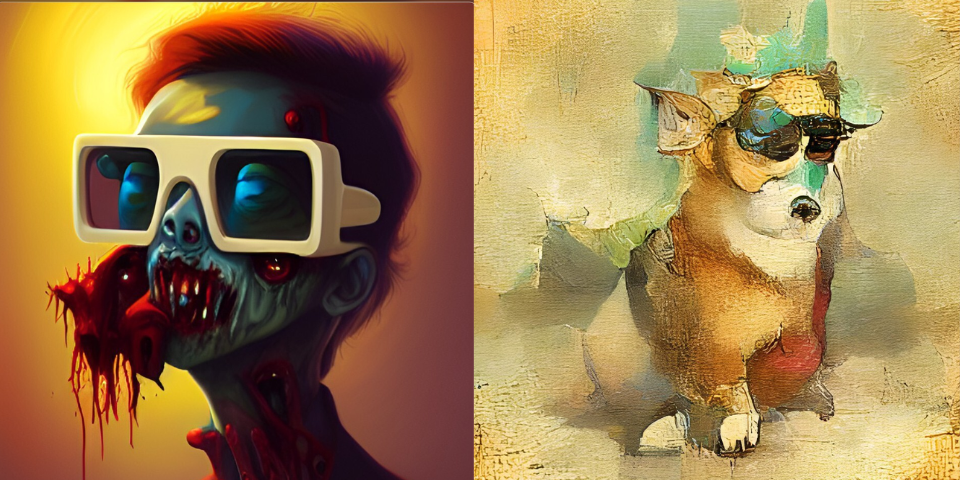Unless you’ve been living under a rock, you’ve probably already heard of how a number of brilliant tech minds have unleashed artificial intelligence to not only do things like crunch large numbers, predict the weather, or reproduce human speech patterns, but to also create art. Lately, there have been many such projects that have involved the use of AI in creating some really astounding artwork, some of them even winning awards (to the dismay of living human artists) and others continuing to impress folks online who just can’t believe the amount of creative nuance that can be generated by machines. Even more fascinatingly, some of these AI art platforms have been marketed as being pretty easy to use — to the point that even not-so-tech-savvy folks (which is most of us) can go ahead and churn out images with a degree of professional artistic quality.
So that’s what one of my colleagues attempted: She went ahead and used the Dream by WOMBO platform to generate some pretty cool results. By inputting keywords or phrases and then choosing a preset art style, the AI went ahead and generated several creations that I can’t help but admit look seriously compelling, and some incredibly accurate to the given caption. Let’s take a look at some of the pieces she managed to conjure: A post shared by Mashable Southeast Asia (@mashablesea) If you went through the pictures in the Instagram post above, you would’ve probably found some of them pretty impressive, although you might now be curious as to how computers can actually come up with such images.
Well, depending on which AI art app you use, you’re going to get different approaches, such as using preexisting photos to generate new art pieces, or by taking text inputs and using algorithms to come up with something entirely original. In the case of WOMBO’s Dream AI, it uses artificial neural networks, just like many other similar AI art platforms. There are two networks involved — VQGAN and CLIP — that communicate with each other to come up with final art pieces based on what a user inputs as the prompt.
A post shared by WOMBO (@wombo. ai) Simply, VQGAN works to generate images that look like other existing images, while CLIP works to determine how well an image fits a text description. These two then communicate with each other by sequentially generating images (VQGAN) and then checking how well that image fits the input given (CLIP).
This back-and-forth process is done a few hundred times before the final product is produced, which the user can then download and use. The complexity of the algorithms involved, however, ensure that multiple generations of the same prompt won’t produce the same end result twice, which is pretty cool and contributes to the originality factor of such software. Just take a look at these images I received when using the prompt “angry egyptian god” on an identical art style preset (Malevolent).
I think the results, although different, do manage to stick close to the text given in that there are definite Egyptian aesthetic elements and an overall sense of foreboding. If you want to go ahead and try creating art using AI, here are some other programs that also use the same method as WOMBO’s Dream: starryai Night Cafe M’sian artist seamlessly bridges the analog-digital gap with works inspired by durians I used a 200W beast to charge six devices at once, and it didn’t break a sweat Here’s a guide to Deepavali, the Festival of Lights Bali still has a trash problem. Just watch this surfer struggle to SWIM through it.
Ramen store workers dressed as Power Rangers rescue girl from being assaulted Cover images generated via Dream by WOMBO. .
From: mashable
URL: https://sea.mashable.com/tech/21646/we-used-ai-to-create-art-the-results-are-actually-pretty-sick
